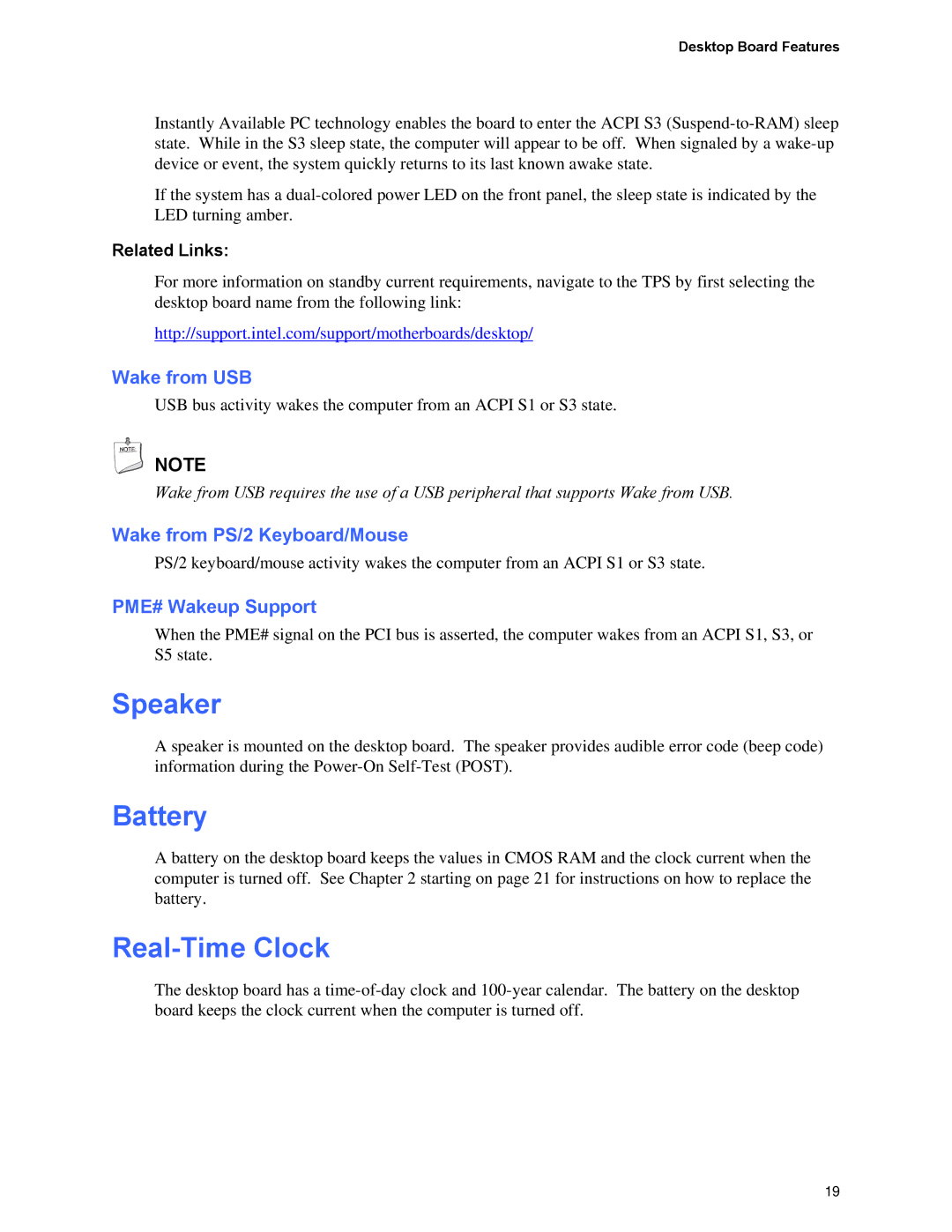Desktop Board Features
Instantly Available PC technology enables the board to enter the ACPI S3
If the system has a
Related Links:
For more information on standby current requirements, navigate to the TPS by first selecting the desktop board name from the following link:
http://support.intel.com/support/motherboards/desktop/
Wake from USB
USB bus activity wakes the computer from an ACPI S1 or S3 state.
NOTE
Wake from USB requires the use of a USB peripheral that supports Wake from USB.
Wake from PS/2 Keyboard/Mouse
PS/2 keyboard/mouse activity wakes the computer from an ACPI S1 or S3 state.
PME# Wakeup Support
When the PME# signal on the PCI bus is asserted, the computer wakes from an ACPI S1, S3, or S5 state.
Speaker
A speaker is mounted on the desktop board. The speaker provides audible error code (beep code) information during the
Battery
A battery on the desktop board keeps the values in CMOS RAM and the clock current when the computer is turned off. See Chapter 2 starting on page 21 for instructions on how to replace the battery.
Real-Time Clock
The desktop board has a
19
